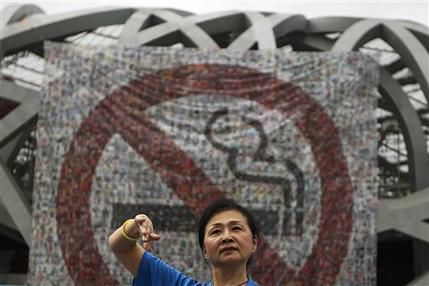ENGLISH VERSION BELOW
Noviembre es reconocido como el mes de concientización sobre el cáncer de pulmón. Este año, la Sociedad Americana del Cáncer estima que habrá más de 236,000 nuevos casos de cáncer de pulmón en Estados Unidos, tanto en hombres como en mujeres. Por esto, es muy importante hacerse una prueba de detección temprana de cáncer de pulmón y así mejorar sus posibilidades de supervivencia, en caso de padecerlo, y reducir riesgos.
¿Qué es el cáncer de pulmón?
Los pulmones son órganos esponjosos que toman oxígeno al inhalar y libera dióxido de carbono al exhalar. El cáncer de pulmón ocurre con mayor frecuencia en personas que fuman, pero también puede ocurrir en personas que no fuman.
Existen diferentes tipos de cáncer de pulmón y, al igual que otros tipos de cáncer, hay diferentes etapas. El cáncer de pulmón de células pequeñas ocurre exclusivamente en fumadores constantes, mientras que el cáncer de pulmón de células no pequeñas es categorizado como varios tipos de cáncer de pulmón, incluidos el carcinoma de células escamosas y el carcinoma de células grandes.

Caitlin Baird.
Por lo general, en las primeras etapas del cáncer de pulmón no se muestran muchas señales o síntomas, sino hasta que éste progresa a etapas más avanzadas. Las señales y síntomas del cáncer de pulmón que debe tener en cuenta son la tos con sangre, dificultad para respirar, dolor en el pecho, ronquera y dolores de cabeza.
Estos síntomas iniciales pueden dar lugar a complicaciones peores, como la acumulación de líquido alrededor de los pulmones que dificulta la expansión de los pulmones durante la respiración o incluso a la propagación del cáncer a otras partes del cuerpo.
Factores de riesgo
Hay varios factores de riesgo controlables e incontrolables para el cáncer de pulmón. Estos factores de riesgo incluyen el tabaquismo, la exposición al humo de segunda mano, la exposición a toxinas como el asbesto o el arsénico, antecedentes de radioterapia o los antecedentes familiares.
Fumar es causa principal de la mayoría de los casos de cáncer de pulmón. El tabaquismo puede causar cáncer de pulmón al dañar las células que recubren los pulmones. Por ejemplo, cuando se inhala el humo del cigarrillo, se respiran carcinógenos que pueden cambiar el tejido pulmonar.
Con el tiempo y una mayor exposición, las células seguirán dañándose, lo que puede llevarlas a actuar de manera anormal o a desarrollar cáncer.
¿Cómo se puede reducir el riesgo?
En primer lugar, si nunca has fumado, no pienses en comenzar. Si actualmente fumas y dejas de fumar, puedes reducir significativamente tus posibilidades de desarrollar cáncer de pulmón incluso después de haber sido fumador durante muchos años.
Existen muchos recursos que pueden ayudarte a dejar de fumar, como las opciones de reemplazo de nicotina. Evita la exposición al humo de segunda mano (fumador pasivo) y a los carcinógenos tanto como sea posible, evitando las áreas donde la gente suele fumar o ciertos sitios que puedan tener carcinógenos. Incluso mantener una dieta saludable y hacer ejercicio todos los días puede ayudarle a reducir el riesgo.
¿Cuándo debes consultar al médico?
Debes consultar con al médico si experimentas alguno de los signos y síntomas del cáncer de pulmón inmediatamente. Si eres fumador y te consideras incapaz de dejar el tabaquismo, puedes consultar con a tu médico sobre estrategias que te ayudarán a dejar de fumar.
La detección del cáncer de pulmón es muy importante, especialmente si tienes antecedentes familiares de cáncer de pulmón o estás en el grupo de edad de 50 a 80 años con un historial de 20 paquetes al año de cigarro y actualmente fumas o ha dejado de fumar en los últimos 15 años.
ENGLISH VERSION
Know the Risks of Lung Cancer Early to Protect Yourself and Your Loved Ones
November is Lung Cancer Awareness Month. This year, the American Cancer Society estimates that there will be more than 236,000 new cases of lung cancer in the United States for both men and women. It is very important to get screened for lung cancer for early detection and to better improve your chances of survival, while also working to reduce your risk.
What is lung cancer?
Lung cancer begins in the lungs. The lungs are spongy organs that take in oxygen when you inhale and release carbon dioxide when you exhale. Lung cancer most commonly occurs in people who smoke, but it can also occur in people who do not smoke.
There are different types of lung cancer and like other cancers there are different stages. Small cell lung cancer occurs exclusively in heavy smokers, while non-small cell lung cancer is a category of several types of lung cancer including squamous cell carcinoma and large cell carcinoma.
In the earliest stages of lung cancer, there are typically not many signs or symptoms as they progress through the advanced stages. Signs and symptoms of lung cancer that you should be aware of are coughing up blood, shortness of breath, chest pain, hoarseness, and headaches. These initial symptoms of lung cancer can lead to worse complications such as fluid accumulating around the lungs causing difficulty for lung expansion during breathing or the spreading of the cancer to other parts of the body.
What are the risk factors associated with lung cancer?
There are many risk factors for lung cancer, which include controllable and uncontrollable factors. These risk factors include, smoking, exposure to secondhand smoke, exposure to toxins like asbestos or arsenic, previous radiation therapy, or family history.
Smoking causes the majority of lung cancer cases. Smoking can cause lung cancer by damaging the cells that line the lungs. For example, when you inhale cigarette smoke you are breathing in cancer-causing carcinogens that ultimately can change lung tissue. Overtime with increased exposure, the cells will continue to get damaged, which can lead them to act abnormally or to develop cancer.
How can you reduce your risk?
First, if you have never smoked, don’t start now. If you currently smoke, you should stop smoking to reduce your risk. If you quit smoking, even after being a smoker for many years, you can significantly reduce your chances of developing lung cancer. There are many resources that can help you quit smoking, such as nicotine replacement options. Avoid exposure to secondhand smoke and carcinogens as much as possible by avoiding areas where people like to smoke or a workplace that may have carcinogens. Even maintaining a healthy diet and getting daily exercise can help you reduce your risk.
When should you consult with your doctor?
You should consult with your doctor if you are experiencing any of the signs and symptoms of lung cancer immediately. If you are a smoker and find yourself unable to quit, you can consult with your doctor about strategies to help you quit smoking and reduce your risk. Screening for lung cancer is very important, especially if you have a family history of lung cancer or are in the age group of 50 to 80 years old with a 20-pack year history and either currently smoke or have quit within the past 15 years.





